The Golden Years of Indian Immigrants in America
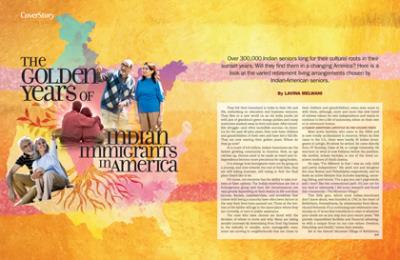
Over 300,000 Indian seniors long for their cultural roots in their sunset years. Will they find them in a changing America? Here is a look at the varied retirement living arrangements chosen by Indian-American seniors.
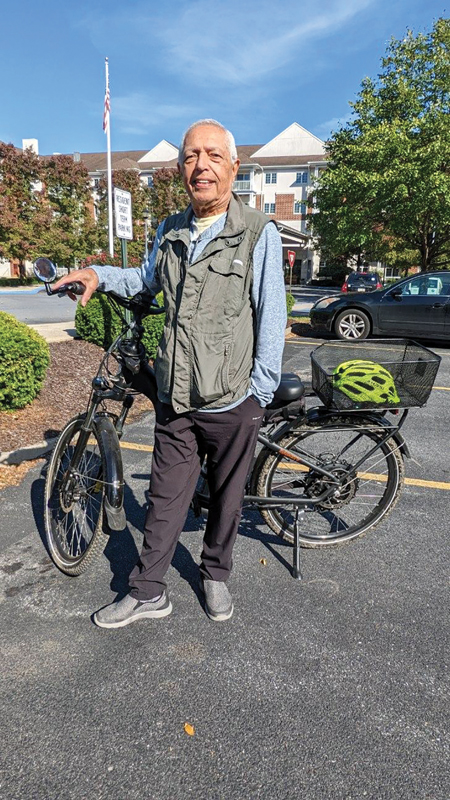 They left their homeland in India in their 20s and 30s, embarking on education and business ventures. They flew to a new world on an Air India jumbo jet with jars of grandma’s green mango pickles and many memories stashed away in their suitcases. After incredible struggle—and often incredible success—in America for the past 40-plus years, they now have children and grandchildren of their own and have led a full life. They are now nearing their golden years. Where do they go now?
They left their homeland in India in their 20s and 30s, embarking on education and business ventures. They flew to a new world on an Air India jumbo jet with jars of grandma’s green mango pickles and many memories stashed away in their suitcases. After incredible struggle—and often incredible success—in America for the past 40-plus years, they now have children and grandchildren of their own and have led a full life. They are now nearing their golden years. Where do they go now?
[Right] At 76, Jyotin Sachdev leads an active lifestyle that includes kayaking, canoeing, biking, and tennis, and enjoys his life in a classic American city full of arts, culture, and heritage.
At a count of 4.8 million, Indian-Americans are the fastest growing community in America. Now, as age catches up, choices need to be made as travel and independence become more precarious for aging bodies.
It is strange how immigrants start out by going on a journey, and now towards the end of their lives, they are still taking journeys, still trying to find the final place they’d like to be.
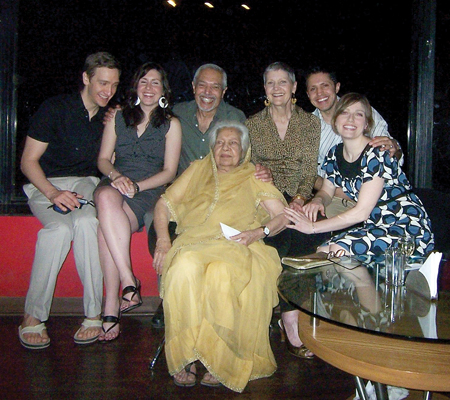
[Left] Sachdev, with his mother and his children and their spouses.
Of course, not everyone has the ability to take journeys or have options. The Indian-Americans are not a homogenous group and their life circumstances can vary greatly depending on their station in life and their income. Racism, casteism/class, and invisibility that comes with being a minority have often been factors in the way their lives have panned out. Those at the bottom of the ladder will age in the same place where they are currently, or turn to public assistance.
The ones who have choices are faced with the decision of where to move and why. Many are taking smaller journeys by downsizing from their big homes in the suburbs to smaller, more manageable ones; some are moving to neighborhoods that are closer to their children and grandchildren; some even move in with them, although, more and more this new breed of retirees values its own independence and wants to continue to live a life of autonomy, either on their own or in retirement homes.
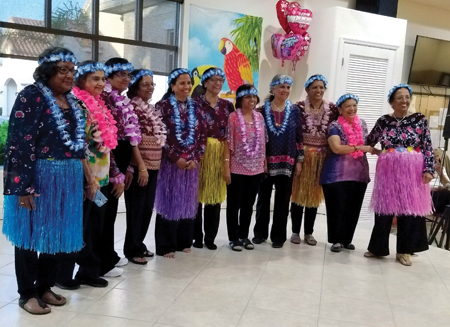
[Top] Anjana, participating in a Hawaiian dance at Shantiniketan.
A classic American lifestyle in the golden years
Meet Jyotin Sachdev, who came in the 1960s and is now totally acclimatized to America. When he first came to the U.S., there were hardly 30 Indian immigrants in Lehigh, PA where he settled. He came directly from IIT Bombay, Class of 68, to Lehigh University. He was born in what is now Pakistan before the partition. His mother, Achala Sachdev, is one of the loved onscreen mothers of Hindi cinema.
He says, “I’m different in that I was an only child and pretty independent.” His adult son and daughter live near Boston and Philadelphia respectively; and he leads an active lifestyle that includes kayaking, canoeing, biking, and tennis. “I’m a guy you can’t pigeonhole, and I don’t like the conventional path. It’s just not for me. And so ultimately, I did some research and found this community—The Moravian Village.”
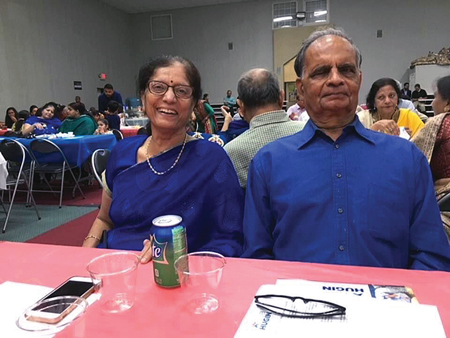 This little gem, which most Indian-Americans don’t know about, was founded in 1741 in the heart of Bethlehem, Pennsylvania, by missionaries from Moravia and Bohemia. It’s a continuing care retirement community on 37 acres that transitions to cater to whatever your needs are as you step into your senior years. “We provide unparalleled facilities and financial advantages with a unique focus on our core values: Freedom, Friendship and Health,” states their website.
This little gem, which most Indian-Americans don’t know about, was founded in 1741 in the heart of Bethlehem, Pennsylvania, by missionaries from Moravia and Bohemia. It’s a continuing care retirement community on 37 acres that transitions to cater to whatever your needs are as you step into your senior years. “We provide unparalleled facilities and financial advantages with a unique focus on our core values: Freedom, Friendship and Health,” states their website.
[Left] Anjana and Jayant Gusani at Shantiniketan, their retirement home in Florida.
Set in the historic Moravian Village of Bethlehem, this retirement community is surrounded with charm and a rich heritage. The town, which is a candidate for UNESCO World Heritage site status, founded the first boarding school for girls in the original 13 colonies, the nation’s oldest pharmacy, the first hospital, and even America’s oldest bookshop.
Money Magazine listed Bethlehem as one of America’s top cities to live in and it has certainly transformed over the years. “The Lehigh River is a very strong part of the psyche out here and plays an important part. It’s like 200 yards from where I live and I can see it from my balcony,” says Jyotin.
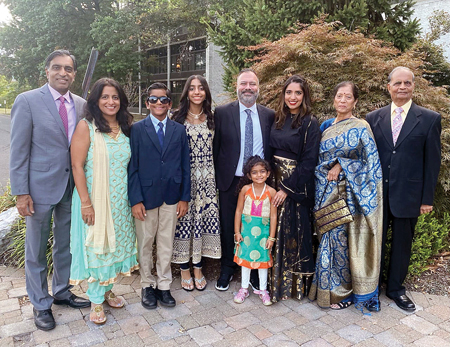
Jyotin admires the rich craftsman skills this community brought to Bethlehem, as they are still known for their handicrafts and music and the area is a small tourist attraction. He has an active lifestyle and visits art galleries and amazing restaurants in the nearby downtown which also has the City Hall. “Everything is within 15 minutes. Every cuisine—you name it. I could walk there but I take my bike.”
[Right] The Gusanis are enjoying both–independence in their senior years as well as proximity to their grandchildren and family.
The city offers so many activities and is also close enough to New York for him to make frequent trips to friends there or to his children. Jyotin a tennis enthusiast who plays tennis three times a week, is a tennis coach and has a large tennis community. There are opportunities to learn new things from glass sculpture to photography in the dynamic city. He says, “I know I’m moving in different circles, but it’s all one big circle. Yeah, I love it! I’m really happy.”
The Moravian Village has three kinds of residential communities. On one side are beautifully landscaped 55-plus community cottage homes. The others are an independent apartment complex as well as an assisted care living facility in the Healthcare Center. There is also a library, gym, sauna, dining facility, and two restaurants. A big garden showcases open-air movies and hosts musicians.
At 76, Jyotin is among the younger residents. The Moravian Village has facilities for all needs, including those who are in their 90s and who need 24/7 care or assistance with dementia or Alzheimer’s.
As American populations age, public and private partnerships are creating senior citizen living centers, many targeting retirees from the subcontinent by introducing Indian flavor to the living environment. Several states now offer alternate senior centers with Indian food, yoga, Bollywood cinema, a celebration of all cultural festivals, and access to people of similar backgrounds. These include retirement homes like Priya Living and Shantiniketan USA where you can travel to India without actually boarding a plane.
Food, friends, family, connection to roots, and so much more
Jayant and Anjana Gusani have found their ideal home away from home in Florida, at a retirement community called Shantiniketan. An immigrant from Rajkot in Gujarat, Jayant worked for Boeing for 24 years and later with United Technology for seven years. He, along with his wife Anjana, who was a pharmacist, reared two children and spent many fulfilling years in New Jersey.

[Top] The Sakranis, who played a leading role in the Indian community of St. Thomas in the Virgin Islands, where are they spent four decades of their lives, have now moved to a luxury apartment complex in Pune, India.
“We lived in Cherry Hill for 33 years. That is where our children grew up and got settled in their own lives after their education and weddings,” he recalls. “And when only the two of us were left at home, we thought if our life was more active, we’d feel better.” Shantiniketan, with the warm Florida weather and access to like-minded seniors, seemed the best solution.
Indeed, it gives them the best of all worlds because they are close enough to their grandchildren, now that his son has moved to nearby Jacksonville. They are also able to have independent, meaningful lives with friends of their own age and daily social interactions.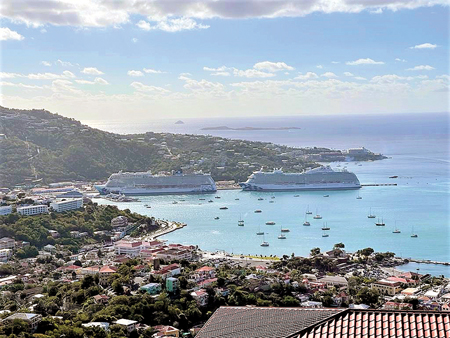
[Left] The lovely view from the house of the Sakhranis in St. Thomas. They left behind a thriving life here and relocated to India to be close to their roots, extended family, and old friends.
For the Gusanis, it is the perfect way to spend their retirement years with activities they care about and food that is totally to their liking. All food at Shantiniketan is vegetarian and the variety cuts across the many regions of India with North Indian and South Indian dishes along with popular additions like pizza and Mexican cuisine too. Lunch is usually a big meal while dinner is a lighter one. The monthly cost of meals is $340 a person per month, and these are a big time-saver for retirees who no longer have to shop, prep, and cook. This is something Anjana really loves as during her pharmacist career, she had to be the one to cook all meals. Says she, “We needed to put so much effort into preparing the meals. Now we eat there or bring it home. I now have a chance to do my art and crafts. I have a chance to do my karaoke. I like to sing and we have bhajans every Sunday.”
The first phase of Shantiniketan where the Gusanis live is hugely popular. Whenever there are any vacancies, they get quickly filled as friends or relatives spread the word. Some spots in Phase 3 of the development are still open and people can consider buying there.
While Shantiniketan is not an assisted living facility, there is a general hospital nearby. There are at least 13 or 14 retired physicians living on the premises who often give seminars on health. In the surrounding area, there are many physicians’ offices, nursing homes, and physical therapy facilities. Along with that, there are grocery stores, places of worship, and drugstores that have Shantiniketan as an important center for their business.
The couple, who had left home long ago to come to a new country, also feel this is the best way, as they too have changed having been in America for most of their adult lives. “We would not be able to adjust if we go back to India now,” says Gusani. “We could have done it in our 50s and 60s. Over time, we have lost our immunity and now we cannot support our health requirements there. We had the thought of going back some time, but that time never came. Now it’s not possible. We cannot break up everything and start all over, like we used to be able to do in the early days. We have lost that.”
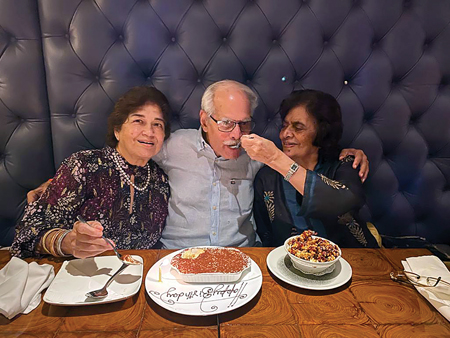
[Top] One of the first things that the couple did was enjoy lunch at a restaurant in Mumbai with Lal’s only sibling, Durga.
Actually, they gained financial stability, children, grandchildren, and a rich life in their immigrant journey. They have the bonus of frequent visits to their children’s homes as well as celebrations and weddings to share.
They have lived in Shantiniketan for six years and have found many long-term friendships as they celebrate spiritual and cultural events together, especially festivals from different parts of India. Anjana is enthusiastic about Super Saturdays when the residents come together for entertainment with songs and dance items. There are also yoga classes and karaoke evenings. There is so much activity that the days are quite full with cinema, television, yoga, bridge sessions, and table tennis.
The main asset is they have a community of their own—if there is any sadness or something bad happens, there are people who know you. Says Anjana, “Some people have lost their partners and are alone, and people are very supportive of them. We are like friends, like close family. We are all willing to help each other.”
Indeed, in their retirement years, people who have spent their entire lives commuting, working, and struggling now want to be in a place which is really and truly home and which is close to everything that matters to them. Sometimes, this literally means going back to their roots, back to the place where they started their immigrant journey.
Full circle back to India.
A decade ago, the Indian-Americans on the cusp of retirement did not have options in India. But, with the burgeoning population of the elderly, which includes parents of NRI sons and daughters, India has also become an attractive market for senior care.
Lal and Jayashree Sakhrani are now making this reverse journey back home. After having spent 40 years on the beautiful island of St. Thomas in the Virgin Islands, Lal, a jeweler who sold wholesale diamond jewelry to the retail stores catering to the countless tourists, is now calling it a day. Strong devotees of Satya Sai Baba, they have visited Puttaparthi many times and are also lead volunteers in the Satya Sai organization in St. Thomas.
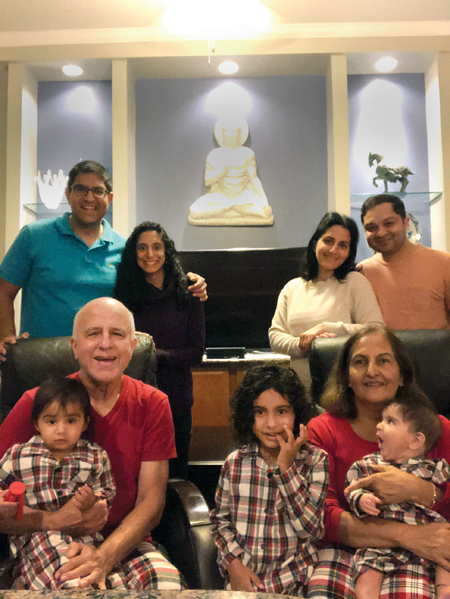
Lal Sakhrani was president of the Indian Association of St. Thomas for a number of years and hosted many visiting ambassadors including K.R. Narayanan, who later became President of India. Lal helped build the Cultural Center in 1999 and it now runs six days a week and conducts bhajan gatherings and children’s classes. Lal and Jayshree were both key part of the thriving Sindhi and Indian community in St. Thomas. They said it was hard to leave all that behind.
But the Sakhranis, who do not have children, are excited to finally be closer to their siblings and large extended family in India, as well as the many friends they had left behind. They have bought a beautiful apartment in a luxury complex in Pune, which is just a two-hour drive from Mumbai and where Indian friends from all over the world return to the homeland like migrating birds in winter.
[right] The Mahtanis, who are enjoying a foot in both countries during their retirement, are seen here with their family.
All their belongings had been shipped to India, and the Sakhranis too are now in Mumbai, delighted to be back in the homeland. One of the first things they did was enjoy lunch at a restaurant with Lal’s only sibling, Durga.
A foot in both countries
Another retiree, Manu Mahtani, has managed to have his cake and eat it too. He has bought a beautiful home in Pune to be close to his roots but also wants to be close to his adult children who both live in New York. The solution is a gorgeous home in Orlando, Florida where his lawyer son and his physician daughter can both visit with their little children. It is called Paradise, and Mahtani says it is. This vast gated community has many Indian residents from many parts of India. He says, “You know we see so many Indians. I say they all came with the same dream and the same hand pulled us all together.”
The Mahtanis, who are Sindhis, have made good friends with Ismailis to Maharasthrians to Gujaratis and South Indians. In their former lives, these people were busy doctors, lawyers, and IT professionals. Now, they all are retired and happy to relax and socialize. There are also 250 Sindhi families in the area, from Daytona to St. Petersburg. Many of these new friends are within walking distance and they often walk with each other around the main lake or catch up in the clubhouse. Says Manu, “It’s a very good way for you to grow old together.”
While the Florida home is essential for being close to their grown children and grandchildren in New York, it also offers them a great warm climate and new friends. For their connection with the past, they travel for four months in winter to their apartment in Pune because it reconnects them with so many friends with whom they had lost touch over the years. Sindhis, who started out as refugees from Sindh during Partition, have become seasoned traders and travelers and are settled all over the world but they often come back to their roots which are often in Mumbai and Pune.
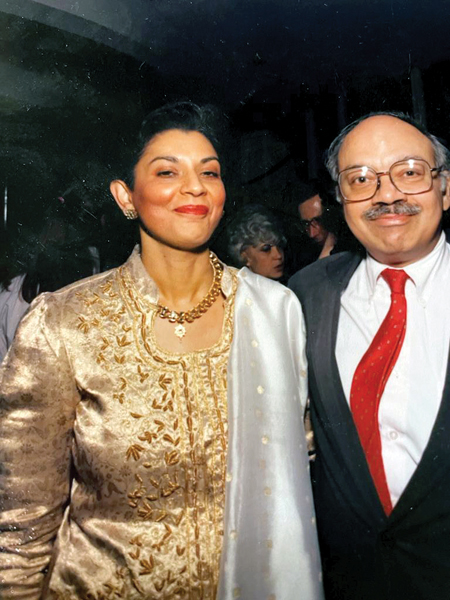
Says Manu, “You don’t realize how many NRIs are now coming and settling permanently in India because we are all getting old and we all want to go back to a place where we can get together and find a group. It’s really a wow factor when you reconnect with people you haven’t seen in 30, 40, even 50 years!”
Then there are some Indian-Americans who love both countries and lifestyles so much that they still can’t decide which should be their future home. Gautam and Nita Advani came to America in the 1960s, so they have roots both here as well as in India. They plan to shuttle between their lovely co-op on Roosevelt Island, NYC and the inherited family home in Mumbai’s Malabar Hill.
[Left] Their extended family of nieces, nephews, and cousins was a big attraction for Nita and Gautam Advani to have a home in India.
While Gautam was heavily invested in the American financial world, Nita, a lifelong Mumbaikar who had attended Walsingham School and then Elphinstone College, came to New York and entered a field which was just starting—the group tour business. She has traveled extensively and believes travel is in her blood.
In Mumbai, their home comes with a magical family cook who whips up parathas and home-cooked meals. A beautician even makes house calls, not uncommon in India. Says Nita, “My two sisters live nearby in the same building. We meet often and have outings with friends.” Their extended family of nieces, nephews, and cousins is a big attraction with many family get-togethers in one or the other family home.
As longtime New Yorkers, the decision to choose between NYC and Mumbai was difficult. While India has the allure of extended family and extensive domestic help, America offers superior medical care. For retirees, no American healthcare coverage extends outside the U.S. On the flip side, Indian health insurance does not cover doctor visits, but does cover hospital visits and surgeries. So, the debate to move or not is perplexing—they seek the best of both the worlds, and fly back and forth.
“The pangs of distance and separation begin after five to eight months, so Covid was stressful,” says Nita. “Stay too long in one city, you pine for the other. In New York, you hunger for desi music, food, sounds, smells; in Bombay, western music, movies, and food!”
As they fly between India and America, Gautam admits he still dislikes the exchange rate—it was under four rupees to the U.S. dollar when he arrived in America in the early 1970s; it is now 83 rupees plus! Yet, he says, speaking for many immigrants like himself and Nita, “We can’t help but feel blessed for having a foot in two of the greatest nations and cities of the day.”
So, whether Indian-American retirees settle in America, in India, or see-saw between the two countries, they are still actively trying to connect, find meaning, and have new adventures even in old places. For these seasoned immigrants and risk-takers, life is still very much an anticipated surprise package.
Who knows what the future holds?
Lavina Melwani is a NY-based journalist who writes for several international publications and blogs at Lassi with Lavina. This article was written with the support of a journalism fellowship from The Gerontological Society of America, The Journalists Network on Generations, and the Silver Century Foundation.
Enjoyed reading Khabar magazine? Subscribe to Khabar and get a full digital copy of this Indian-American community magazine.
blog comments powered by Disqus










